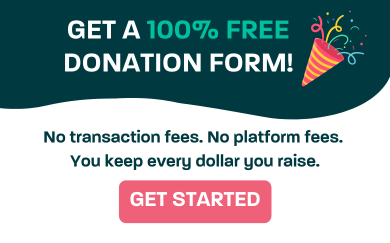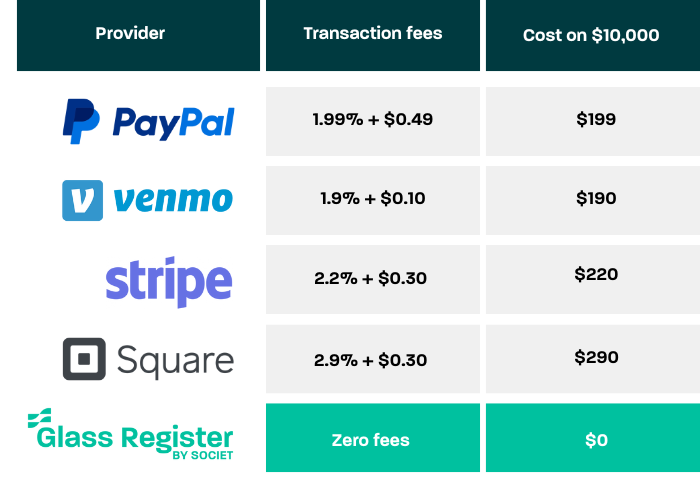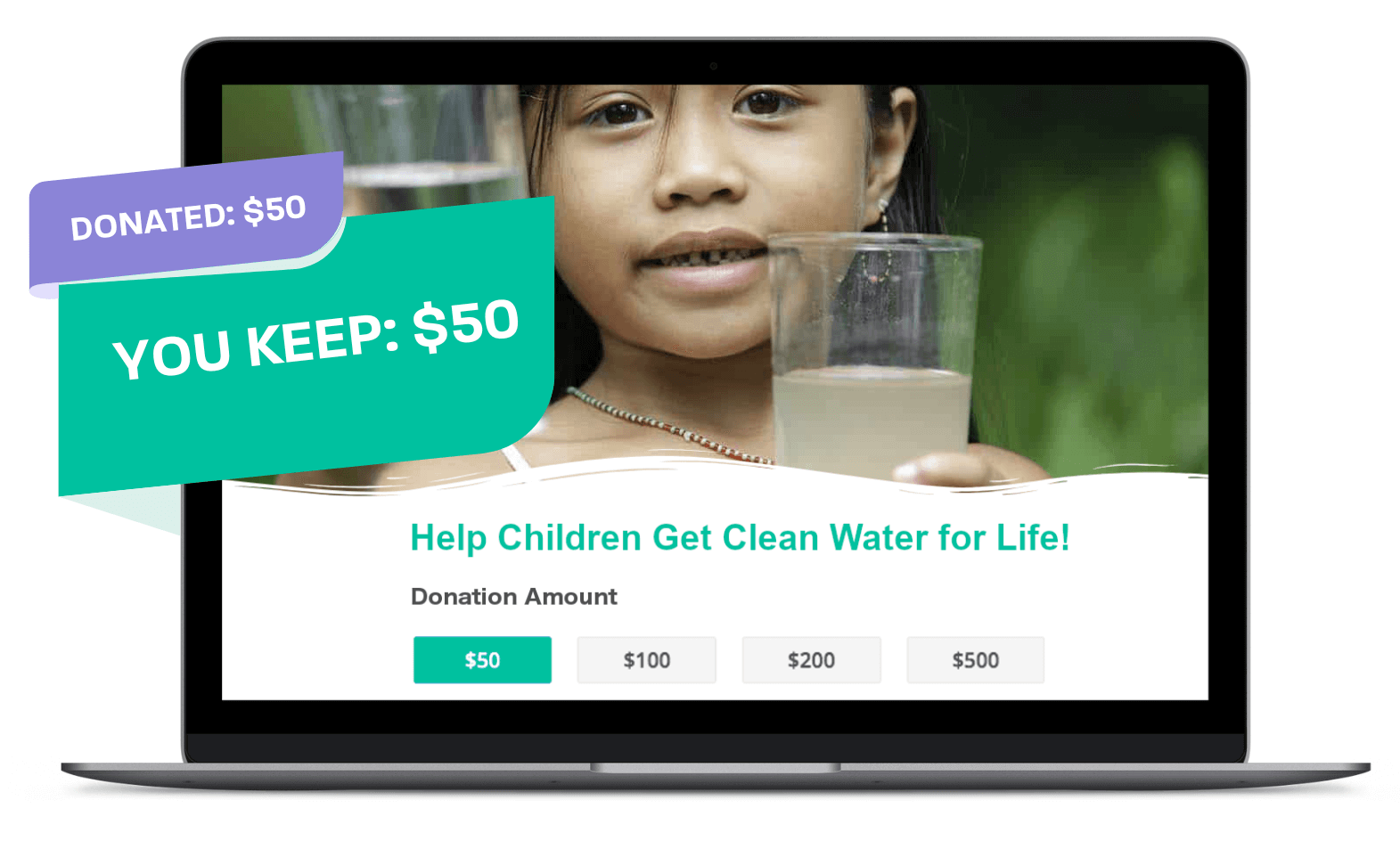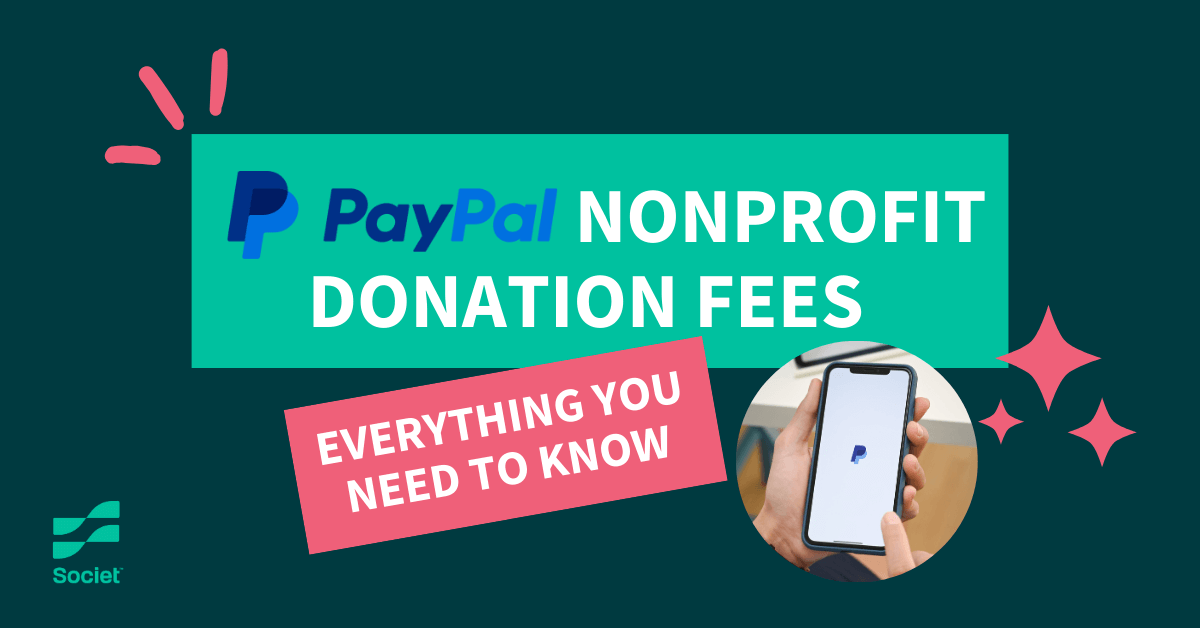
PayPal, a globally recognized brand, is often a go-to choice for many nonprofits seeking to collect donations online. However, understanding the intricacies of PayPal nonprofit fees is crucial for maximizing the funds that reach your cause.
In this blog, we’ll explore what PayPal fees for nonprofits entail, how PayPal can be used by nonprofits, and some great alternatives.
Can PayPal Be Used for Nonprofits?
Absolutely! PayPal is widely used by nonprofits around the world due to its ease of use and widespread acceptance.
The platform allows organizations to accept donations through various channels, including online donation buttons, PayPal.me links, and even in-person payments using PayPal’s card readers.
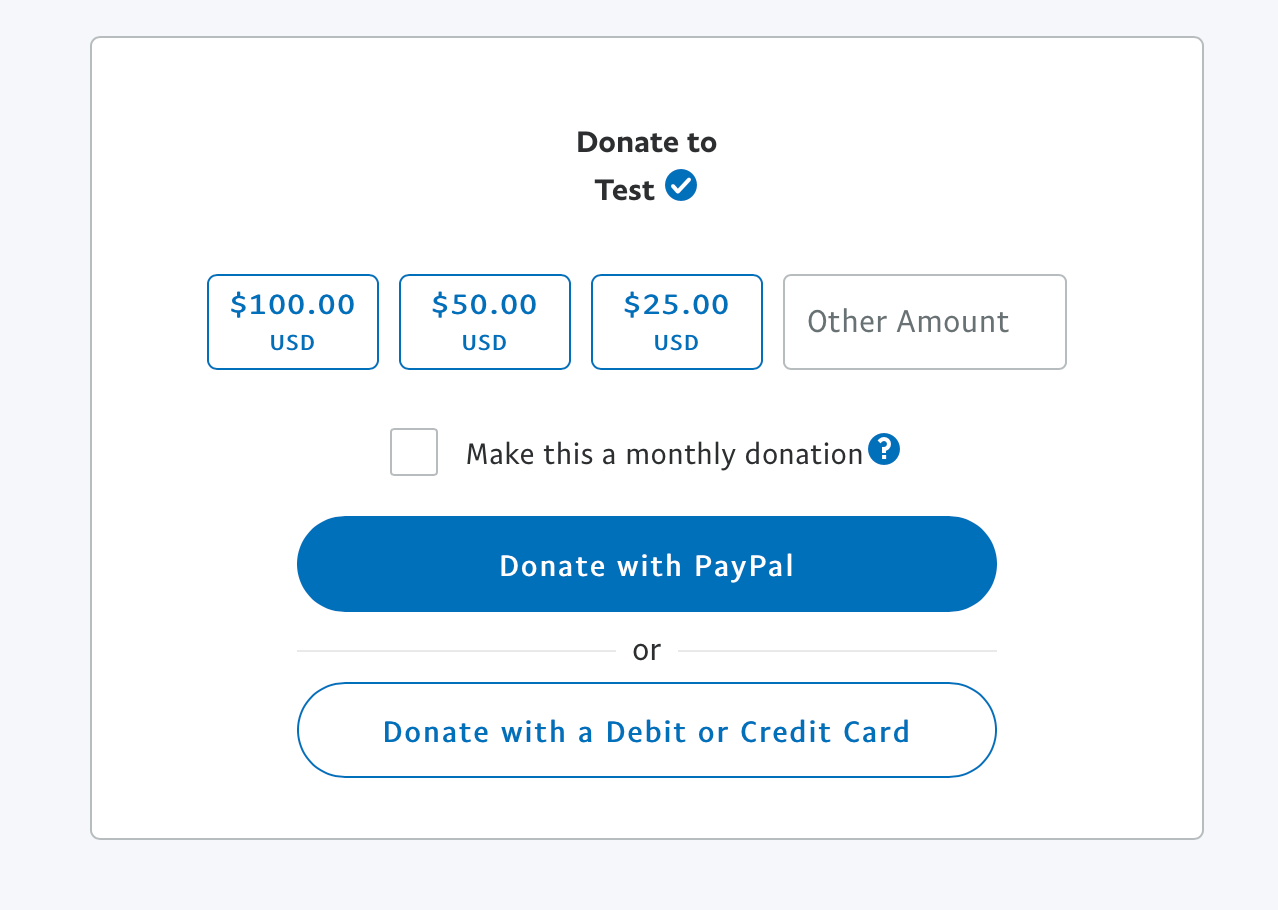
One of the significant advantages of using PayPal for nonprofits is its familiarity among donors. Many people already have PayPal accounts, which can simplify the donation process and potentially increase conversion rates.
What Are PayPal Nonprofit Fees?
Understanding PayPal nonprofit fees is essential for budgeting and financial planning. PayPal offers special fee structures for registered nonprofits, making it a popular choice for organizations looking to facilitate online donations.a
How Much Does PayPal Charge for Nonprofits?
As of 2025, PayPal charges a discounted rate of 1.99% + $0.49 per transaction for eligible nonprofits. You can apply for this charity rate here.
This is a significant reduction from the standard business transaction fee of 2.89% + $0.49. However, it’s important to note that these rates can vary based on the currency used and the donor’s location. For international donations, an additional fee of 1.50% may apply.
Alternatives to PayPal for Nonprofits
While PayPal nonprofit fees are competitive, they can still add up, especially for organizations that rely heavily on small donations.
It’s crucial to weigh these costs against the convenience and global reach that PayPal offers and consider alternatives!
A 100% Free Alternative to PayPal for Nonprofits
Before we compare PayPal to Venmo, Stripe, and Square, we wanted to introduce a new free alternative that nonprofits are loving! Glass Register donation forms for nonprofits offer zero transaction fees and zero platform fees, so you keep 100% of your donations.
For organizations seeking to minimize fees, maximize donations, and maintain their branding, Glass Register offers a compelling alternative.

Square vs. PayPal for Nonprofits
Square‘s fees are higher than PayPal’s (see table above), but the payment platform provides a versatile solution for nonprofits, especially those managing both online and in-person transactions requiring point-of-sale capabilities.
Additionally, Square for nonprofits has analytics tools that can help track fundraising progress, providing valuable insights for strategic planning.
Stripe vs. PayPal for Nonprofits
Stripe’s payment processing fees are also higher than PayPal nonprofit fees (see table above), but they cater to slightly different needs.
PayPal is really easy to setup, but often redirects donors away from your website, which can disrupt the donation process. Stripe, on the other hand, excels in providing a seamless donation experience with embedded forms that keep donors on your site.
Venmo vs. PayPal for Nonprofits
Venmo‘s fees are slightly higher than PayPal nonprofit fees (see table above), however there are some critical difference in functionality that could make either the preferred choice for your nonprofit.
PayPal is a trusted platform for online donations. Venmo for nonprofits, on the other hand, offers a more informal and social way to donate using digital wallets and money transfers, appealing particularly to younger donors.
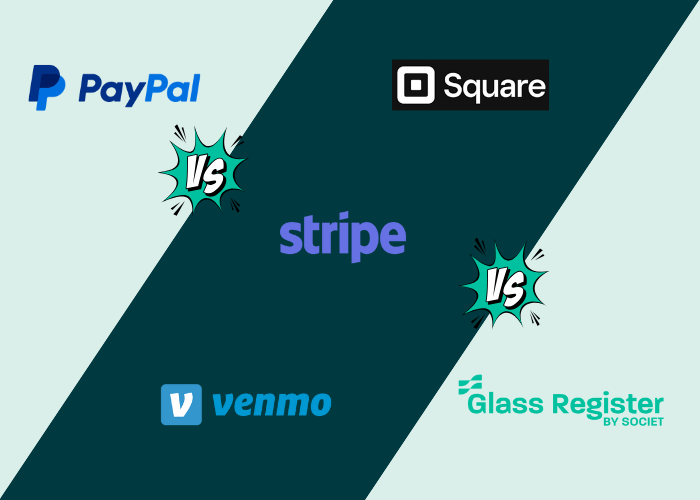
How to Use PayPal for Nonprofits
Using PayPal for nonprofits is straightforward, but there are several steps to ensure you’re maximizing its potential:
1. Set Up a PayPal Business Account: Begin by creating a PayPal Business Account specifically for your nonprofit. This account type provides access to the nonprofit fee structure and additional features tailored for organizations.
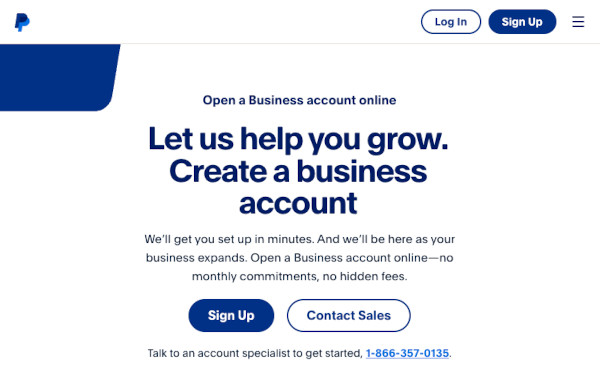
2. Confirm Nonprofit Status: To qualify for PayPal nonprofit fees, you’ll need to confirm your organization’s nonprofit status. This typically involves providing documentation such as your 501(c)(3) status or equivalent.
3. Integrate Donation Buttons: Embed PayPal donation buttons on your website and social media platforms. These buttons allow donors to contribute directly through PayPal, streamlining the donation process.
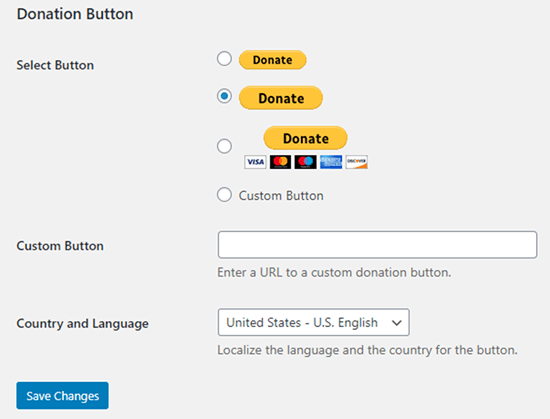
4. Utilize PayPal Giving Fund: Enroll in the PayPal Giving Fund to reach new donors on platforms like eBay and PayPal itself. This fund helps nonprofits connect with potential supporters who are already engaged in charitable giving.
5. Promote Recurring Donations: Encourage supporters to set up recurring donations through PayPal. While PayPal’s recurring donation options are limited to monthly intervals, they can provide a steady stream of income for your organization.
6. Monitor Transactions: Regularly review your PayPal transactions to track donation trends and ensure accurate financial reporting. This will help you identify opportunities for growth and address any potential issues promptly.
Pros of Using PayPal For Nonprofits
PayPal is a popular choice for nonprofits due to its widespread recognition and ease of use, which can enhance donor trust and engagement. One of its significant advantages is the ability to accept donations from a global audience, supporting multiple currencies and payment methods.
For nonprofits that qualify, PayPal offers a discounted transaction fee of 1.99% plus a fixed fee per transaction, making it a cost-effective option for many organizations.
Additionally, PayPal’s integration capabilities allow nonprofits to embed donation buttons directly on their websites, making it easy for supporters to contribute without leaving the organization’s site.
Cons of Using PayPal For Nonprofits
Despite its many advantages, PayPal has several drawbacks for nonprofits, particularly regarding its fee structure and functionality.
While the discounted rate is beneficial, other platforms offer more competitive pricing, especially for international transactions, where additional fees apply. And a 100% free alternative now exists: Glass Register.
PayPal’s third-party nature can also lead to donor redirection away from your website, potentially disrupting the donation process and impacting the donor experience.
Furthermore, PayPal lacks some advanced features tailored to nonprofit needs, such as comprehensive donor management and customizable donation forms, which can limit an organization’s ability to track and engage with donors effectively.
The Case for A Free Alternative: Glass Register
Why Choose Glass Register?
- Zero Fees: Unlike PayPal nonprofit fees, Glass Register does not charge any transaction fees. This means that every dollar donated goes directly to your cause, maximizing the impact of each contribution.
- User-Friendly Interface: Glass Register is designed with simplicity in mind, making it easy for nonprofits to set up and manage their donation processes without the need for extensive technical expertise.
- Customizable Donation Forms: With Glass Register, nonprofits can create customizable donation forms that align with their branding and messaging. This personalization can enhance the donor experience and encourage repeat contributions.
- Dedicated Support: Glass Register offers dedicated support to assist nonprofits in optimizing their donation processes and addressing any challenges that may arise.
How to Get Started with Glass Register
Head over to Glass Register, create your free account, and someone will reach out to you to help you create your first donation form!
Conclusion
Navigating the world of online donations can be challenging, but understanding PayPal nonprofit fees and exploring alternatives like Glass Register can empower your organization to make informed decisions.
By considering Glass Register as a fee-free alternative, nonprofits can keep 100% of all money raised online, helping them have a greater impact. Whether you choose to stick with PayPal for nonprofits or explore new options, the key is to align your donation strategy with your organization’s goals and priorities.
Remember, every dollar counts in the nonprofit world, and by optimizing your donation processes, you can ensure that more of each contribution goes towards driving positive change.
